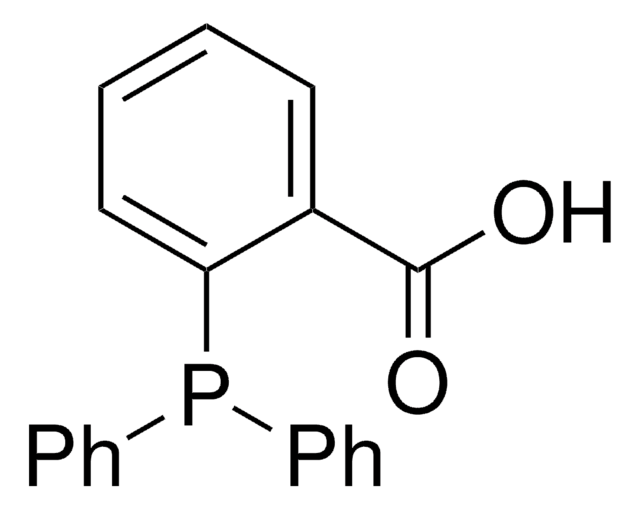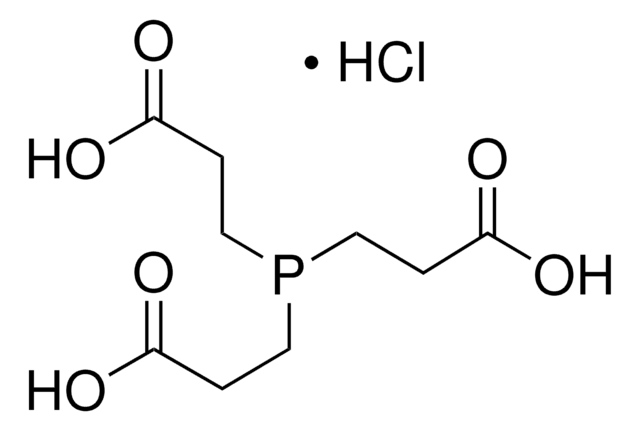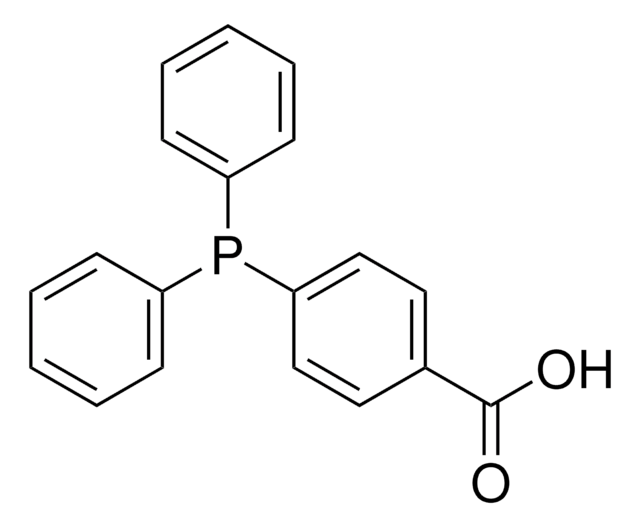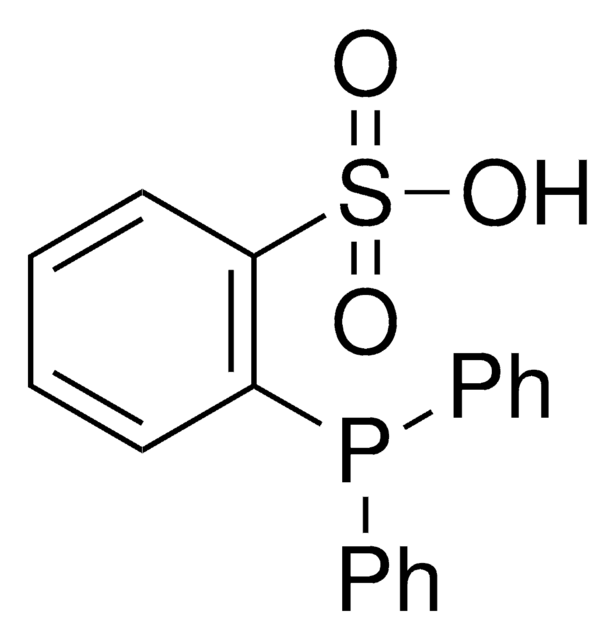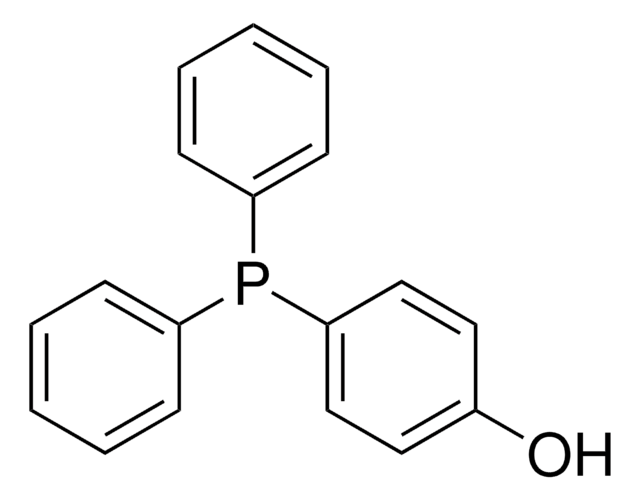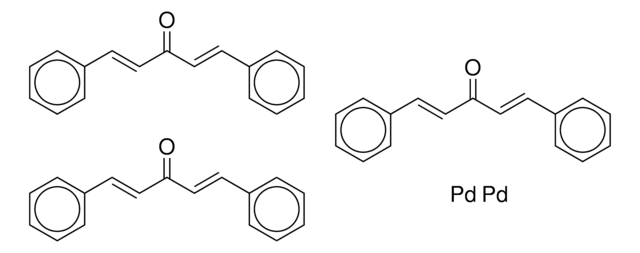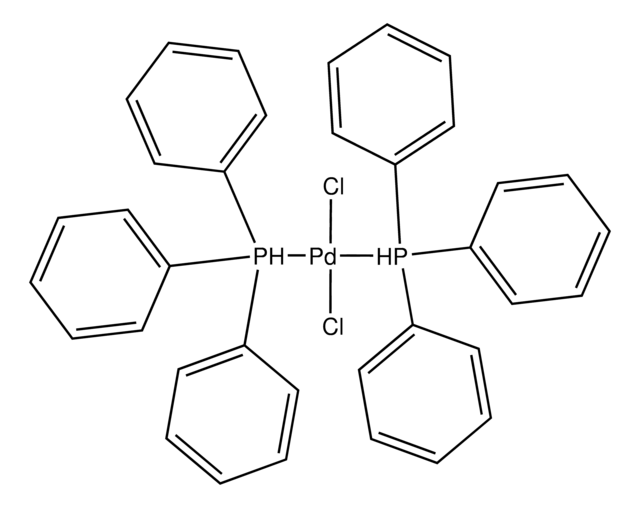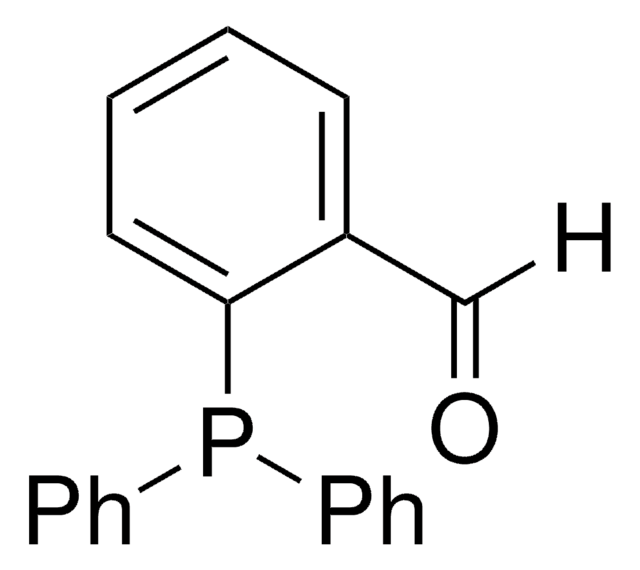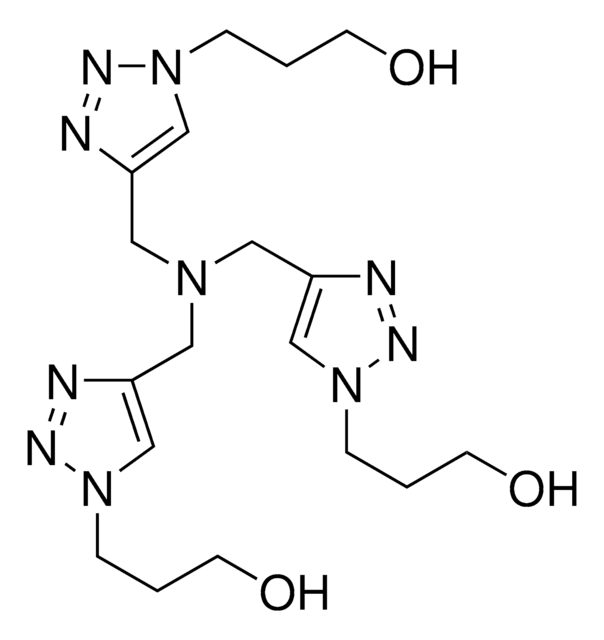推荐产品
质量水平
方案
≥95%
表单
powder
储存温度
−20°C
SMILES字符串
P(c3c(cccc3)C(=O)N)(c2ccccc2)c1ccccc1
InChI
1S/C19H16NOP/c20-19(21)17-13-7-8-14-18(17)22(15-9-3-1-4-10-15)16-11-5-2-6-12-16/h1-14H,(H2,20,21)
InChI key
IHGZKYLRNBICEF-UHFFFAOYSA-N
一般描述
It is recommended to make fresh stock stolutions prior to each use.
应用
2-(Diphenylphosphanyl)benzamide (DPBM) is a phosphine useful in the Staudinger reduction in chemical biology and medicinal chemistry. Recently, DPBM was demonstrated to faciliate the reactivation of CRISPR/Cas9 functions by removing azidomethylnicotinyl (AMN) groups used to masked gRNA and inhibit CRISPR systems. AMN groups were originally added with the use of RNA probe NAI-N3 (cat# 913812).
储存分类代码
11 - Combustible Solids
WGK
WGK 3
Shao-Ru Wang et al.
Nature communications, 11(1), 91-91 (2020-01-05)
Prokaryotes use repetitive genomic elements termed CRISPR (clustered regularly interspaced short palindromic repeats) to destroy invading genetic molecules. Although CRISPR systems have been widely used in DNA and RNA technology, certain adverse effects do occur. For example, constitutively active CRISPR
我们的科学家团队拥有各种研究领域经验,包括生命科学、材料科学、化学合成、色谱、分析及许多其他领域.
联系技术服务部门